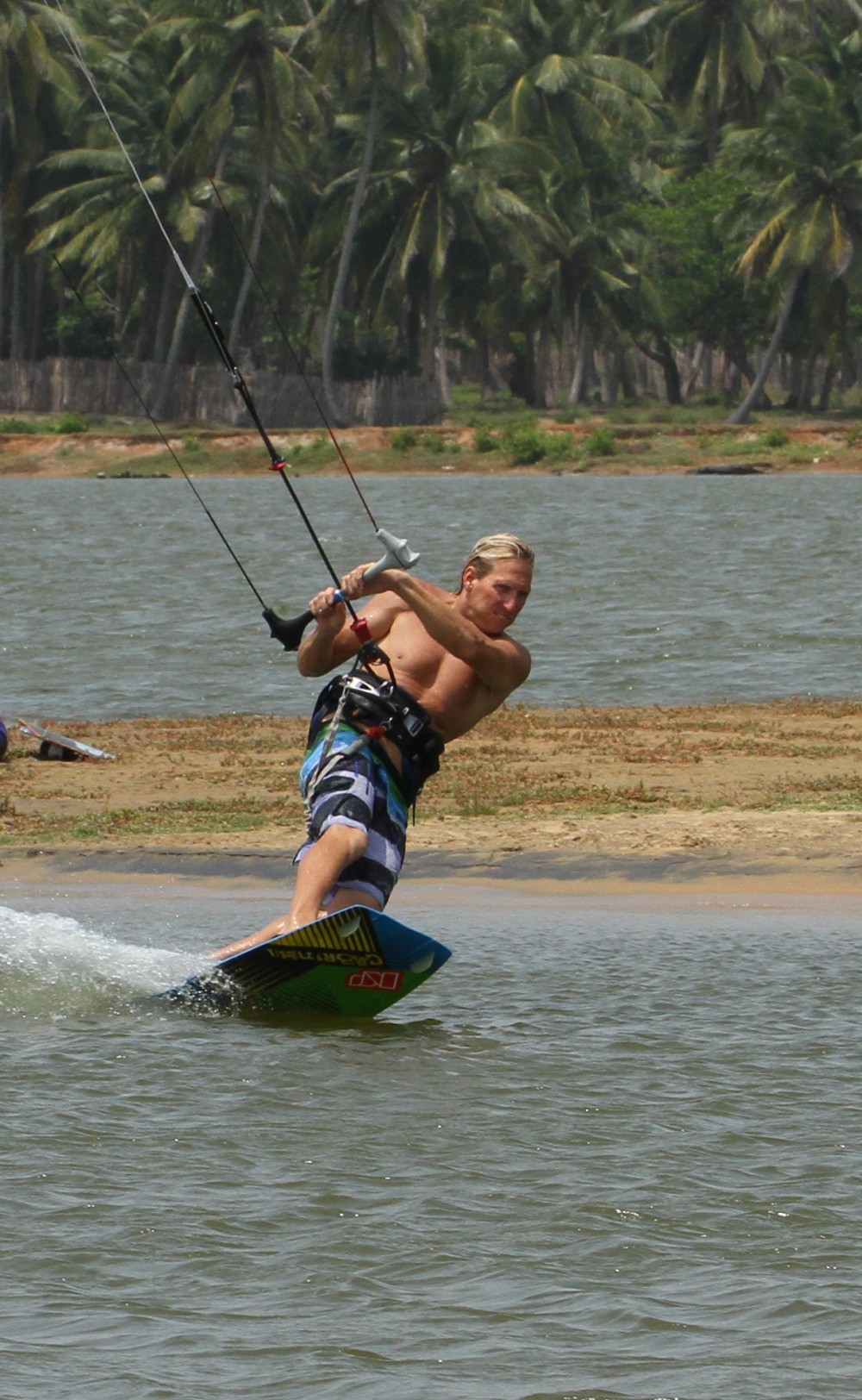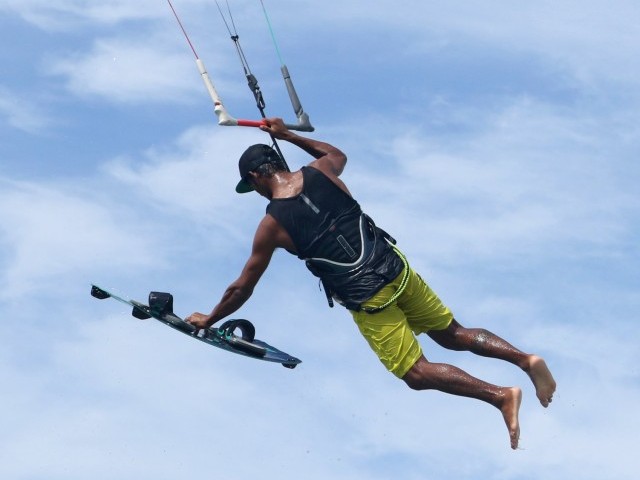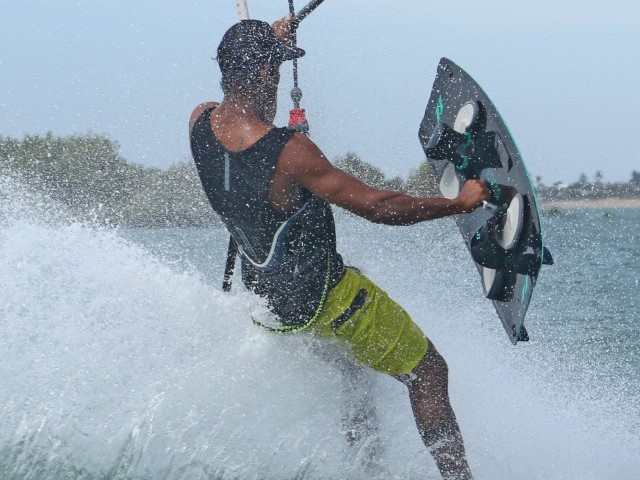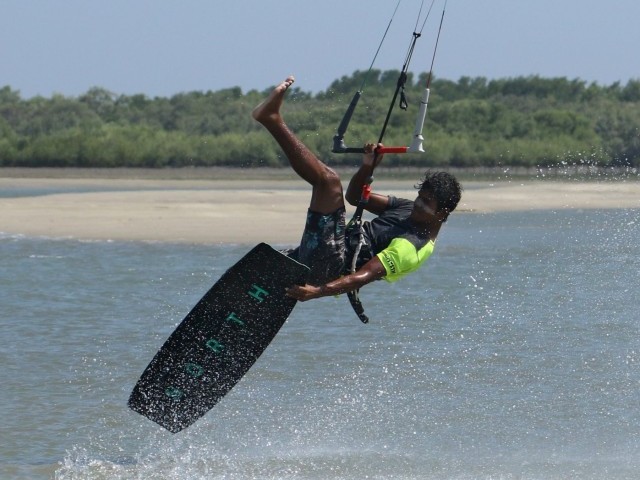
Toeside Double Front Loop Down Loop Transition
Technique / Advanced
Introduction
It is all well and good having a plethora of moves in your box of tricks, but you need to make sure that you keep up with the transitions too. Having more ways to change direction is never a bad thing so here is another one which will have you flying out gracefully with plenty of beans.
Before attempting this we’s strongly recommend a controlled front loop from toe side and solid down loop. Let’s have a look at a few pointers that will hopefully make the learning a tad simpler.
The Approach
You don’t need huge amounts of height for this but some forward momentum and plenty of float is obligatory, so you’ll need to approach this more as a double front roll with speed and the kite parked at either 1 or 11 o’clock. You’ll be taking off from your toes and therefore trim is important, so get your sweet spot down towards you. This way you’ll be able to get on a decent committed edge and still have room to send the kite without stalling it. Your toe side stance needs to be solid. In the photo Christian has all of his body upwind of the board, both knees are bent and driving forward with all his weight firmly on both sets of toes, creating a decent rooster tail behind him. With his sweet spot close in Christian can get his shoulders and head committed upwind and the kite is not pulling him up onto the board.
Getting Airborne
To get enough height and time from your toes the take off is crucial. Get it wrong and you’ll fly down wind and pendulum under your kite! In order to initiate your front rotation you need to get your weight back so that you can kick off your back leg, and in order to go up you need to send the kite with a good push and pull from both hands. Christian has sent the kite with a decent bar action, keeping it on the sweet spot. If he pulled it in any further the kite will pull him up onto the board and he’ll loose his edge. The order of play here is to send the kite with both knees bent and then drop your weight back ready to kick off. If you drop back too early you’ll loose both speed and the ability to edge hard.
Roll With It
Initiating the front troll and keeping the edge for as long as possible will help and awful lot. When the kite lifts you’ll be stamping hard off your back foot, and extending up into your rotation with as much energy as you can muster. Here you can see why it is so important to get the weight onto the back foot. Christian is stamping hard against the edge to initiate the double roll whilst extending up. This keeps the tail of the board in contact with the water for as long as possible giving him added whip and height. Christian throws his head and shoulders down to add inertia and already centres the bar with both hands to stop the kite flying too far back.
Moving Forward
Here we can see Christian just past the 360 degree mark. He has completed his first rotation whilst still on the way up and now starts his second. Having kept the kite close to 12 o’clock he has both float from the kite and he can feel where the kite is. You must commit to the second rotation so as soon as you come around the first continue to fur your head and go with the energy you created on take off. If the kite is above you or even slightly in front of you, you are well placed to start the down loop. There are two reasons to start it now. Firstly the pull from the kite will help pull you around the rest of the way. And secondly the earlier we pull, the less aggressive, relatively speaking, we need to be on the bar. Your aim is for the kite to pull you out of the transition with speed and if the kite down loops too quickly or from too far behind it will drop you down with no momentum. You can see in the photo that Christian has his knees up tight, bar in close and his head is turned to rotate, all this will make him turn faster. Looking at the bar you can see that he is already initiating the down loop.
Clean Landing
The moment of truth and another insight into the reason you must down loop early, gradually and continually. Looking at Christian you can see that he is landing right foot forward downwind on the tail of his board, ready to carve out of the “turn” and back onto his edge. Realistically he is not completing two full rotations (that would be landing left foot forward), it is more like one and three quarters. So not only does the down loop give you speed but it pulls you out of the rotation. If you start the down loop later you will effectively over rotate and land on your heel side edge, stopping all momentum and you in the process. Finally Christian keeps pulling the kite through the down loop until it is back up at 1 o’clock in the perfect position to ride away.
Top Tips
To start with aim to get the rotations and a complete down loop, as this will be better than under cooking it with the kite, so when you do pull on the front hand, pull hard. This will however often result in you stopping when you land.
Once you’ve practiced that a bit and having read the previous pointers you can see that the aim of this move is not to perform a double rotation and a down loop in the air, but rather get your rotation and use the down loop to pull you out with speed. Essentially you will be finishing the down loop as you land, not before.
To get your head around this try some air gybe down loops first. If you go early and hard the kite turns, goes back up to 12 o’clock and you sink. Your aim is to progressively turn the kite more gently so that it will go through the bottom of the down loop before you pan but as it rises it will pull you through the landing and give you a good speedy landing.
Now have a good look at the Sequence and the Videos for a full step by step guided tour.
Common Problems
If you find that you cannot edge enough when sending the kite, and therefore get pulled too much downwind whilst in the air - trim. Even if you have Gorilla length arms you need that sweet spot and the bar in close.
If you find that you’ll landing with now power, as discussed above, you need to get the kite just in front of 12 just after take off and then down loop the kite more slowly.
If you’re landing on your hip and can’t get the board underneath you, this is a sign that the kite is down looping too low, so make sure you haven’t redirected the kite too much after take off, and be a bit more aggressive when you pull on the front hand to down loop it.
Keystones
- Fast Toeside with both knees driving forward.
- Rock weight back and send hard
- Kick up off back leg, head and shoulders down
- Redirect kite above you and stay small
- Start Downloop progressively once you go into your 2nd rotation
This technique article was in Issue 45 of IKSURFMAG.
Related
By Christian and Karine
Christian and Karine have been working together as a coaching team, running improver to advanced kitesurfing clinics since 2003.




























